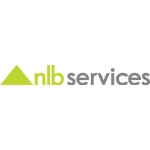© 2025 Next Level Business Services Inc. All Rights Reserved.
How to Build a Diverse Leadership Pipeline in 2025
By NLB Services
Today’s fast-paced and complex business environment has made diverse leadership the cornerstone for organizational success. And as 2026 comes closer, it is imperative that building a diverse leadership pipeline is no longer a luxury but a crucial strategic priority. By proactively cultivating and preparing future leaders, organizations are better equipped to steer through disruptions, capitalize on opportunities, and sustain long-term growth.
In this blog guide, we will understand the know-how of building a robust leadership pipeline. With the help of some data-driven insights, real-world examples, and proven best practices, this article helps HRs, executives, and business leaders to create, implement, and introspect a sustainable and diverse business leadership that aligns with your business goals.
Why Leadership Diversity is a Strategic Priority
When organizations have a diverse leadership pipeline, it ensures a steady flow of capable leaders ready to step into critical roles. The lack of a DEI leadership pipeline risks costly leadership gaps, lost institutional knowledge, and stalled growth. A report from Korn Ferry reveals that 67% of organizations witness leadership shortages that threaten their future success.
Diverse leadership faces dynamic challenges amid rapid digital transformation, evolving workforce expectations, and increased emphasis on leadership diversity and inclusion. Leaders today need to be agile, empathetic, digitally savvy, and capable of inspiring diverse teams.A well-structured leadership pipeline aids organizations in developing these capabilities internally, reducing reliance on external hires and ensuring cultural continuity.
Developing a Diverse Leadership Pipeline
Building a truly diverse leadership pipeline takes some planning and strategizing, and organizations must:
- Evaluate current levels of diversity by performing a workforce analysis to determine gaps and opportunities for improved inclusion
- Establish quantifiable, explicit DEI goals and commit to meeting them at a senior level, such as board meetings and holding executives responsible for progress.
- Look for potential leaders at earlier stages through systematic performance reviews, 360-degree feedback, and talent spotting to identify high-potential individuals from diverse backgrounds.
- Use inclusive hiring and development strategies, such as putting together diverse panels for interviews, eliminating superfluous obstacles from job descriptions, and giving fair feedback in psychologically friendly environments.
- Provide sponsorship and mentoring initiatives, such as reverse mentoring, to match seasoned mentors with promising and upcoming leaders from underrepresented groups.
- Continue investing in ongoing leadership development that highlights both technical and inclusive leadership skills, providing continuous learning opportunities for all
Benefits of DEI in Leadership
In a nutshell, DEI in leadership is built on acknowledging the fact that new competencies are required to thrive in a diverse world. And as organizations witness increasing pressure to align with changing markets and stand up for social issues, DEI in leadership teams is not just a nice thing to have, it’s something that organizations require to showcase their stance as well.
An organization’s dedication to an inclusive culture very much reflects the mindset, heart, and soul of the leaders of that organization that directly shape the work they do. Working with a purpose that is cultivated, and the accountability created among the teams for how people are treated in the organization and the community.
Promoting DEI by having a diverse leadership pipeline ensures that everyone has equal opportunities to thrive and contribute in a more just and equitable environment. Leaders who promote DEI play a crucial role in creating an equitable society, let alone the internal workings of the company.
Since the daily activities of an organization are directly connected to employee satisfaction, decision-making, and stakeholder approval, DEI in leadership has become the new imperative. It brings diverse perspectives and has a close impact on business profitability. When employees at all levels feel safe, valued, and included at work, quality output is likely to be high, and growth is less likely to plateau.
Diverse leadership gives an edge to the teams as they get better equipped to anticipate and respond to regulatory changes, market shifts, and intermittent business risks. This adaptability is increasingly important in a world where change is constant and stakeholder expectations continue to evolve.
Building future-ready leadership requires a pipeline that incorporates leadership diversity and inclusion at every level of talent development. Organizations in the US, UK, and elsewhere may set themselves up for long-term success in a world that is becoming more varied and complicated by making sure that their leadership pipelines are strong, creative, and representative of the societies they serve.
Conclusion
Building a diverse leadership pipeline is no longer optional; it’s a strategic imperative that directly impacts organizational resilience, innovation, and long-term viability. Diverse leadership drives better decision-making, enhances financial performance, and creates workplaces where all talent can flourish. The pathway forward requires intentional action: conducting honest workforce audits, setting measurable DEI goals, identifying high-potential talent early, and investing in inclusive development programs.
The most critical element is authentic commitment from the top. Diversity initiatives fail when treated as checkbox exercises rather than cultural transformations. Leaders must model inclusive behaviours, hold themselves accountable, and recognize that building diverse pipelines is ongoing work, not a one-time project.
As 2026 approaches, organizations that prioritize and develop leadership diversity will be best positioned to navigate complexity, reflect their communities, and attract top talent. The question isn’t whether to build diverse leadership, it’s whether you can afford not to. Read our other blogs here.
Frequently asked questions
- Why does leadership diversity matter?
First, diverse leadership brings varied perspectives, experiences, and problem-solving approaches to decision-making. Second, diverse leadership drives innovation by challenging groupthink and helps organizations better understand diverse perspectives of varied customer bases. Research shows that diverse leadership teams achieve stronger financial performance and employee satisfaction. Third, apart from business metrics, it creates equitable opportunities and signals organizational values. And lastly, when leadership reflects the communities they serve, it creates trust, enhances reputation, and builds role models for emerging talent across all backgrounds.
- What are the common barriers to leadership diversity?
Unconscious bias in hiring and promotions remains a significant obstacle, favoring candidates who resemble existing leaders. Limited access to mentorship, networking opportunities, and sponsorship disproportionately affects underrepresented groups. Traditional leadership pipelines often lack diverse talent pools.
Workplace cultures that don’t value inclusion can drive diverse candidates away. Additionally, inflexible work arrangements, unequal professional development access, and “culture fit” criteria that prioritizes conformity over complementary skills all create systemic barriers preventing diverse leadership.
- How can we ensure leadership development programs are inclusive?
As shared in the guide above as well, you can start by auditing current programs for accessibility and representation gaps. Design programs tackling diverse leadership styles and experiences instead of one-size-fits-all approaches. Provide equitable access through flexible scheduling, remote options, and removing barriers. Include diverse facilitators and mentors who reflect varied backgrounds. And create psychologically safe environments where all participants feel valued.
- How can small companies build diverse leadership with limited resources?
Small companies can leverage cost-effective strategies like partnering with diversity-focused professional organizations for talent access. Implement structured interview processes to reduce bias without expensive tools. Create mentorship programs pairing senior and junior staff. Build relationships with diverse community organizations and educational institutions. Focus on inclusive culture-building through transparent promotion criteria and equitable opportunities. Sometimes constrained resources force creative, authentic approaches that larger organizations struggle to achieve.
Talent Solutions








